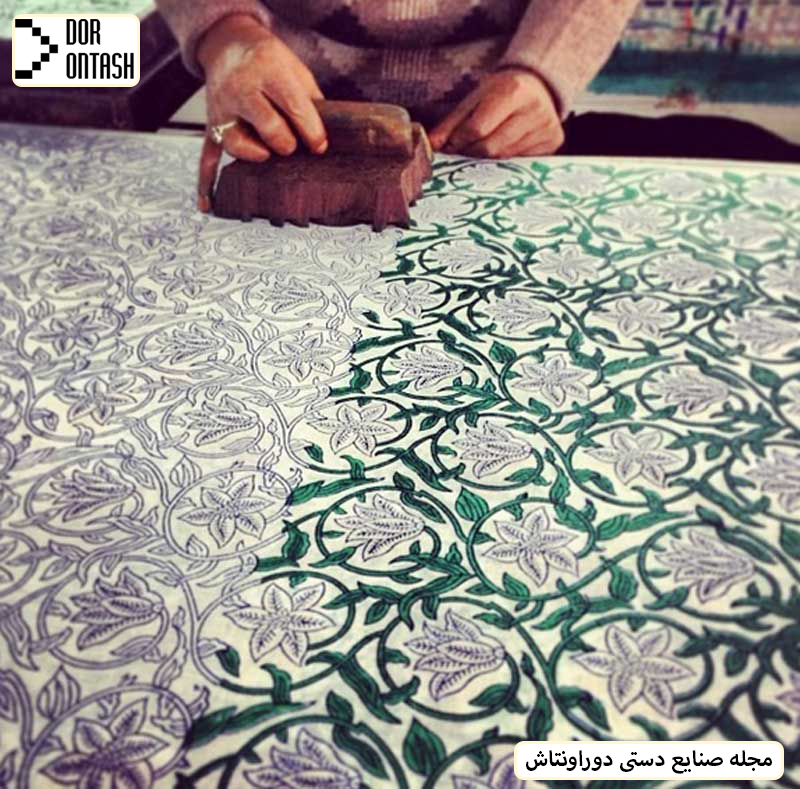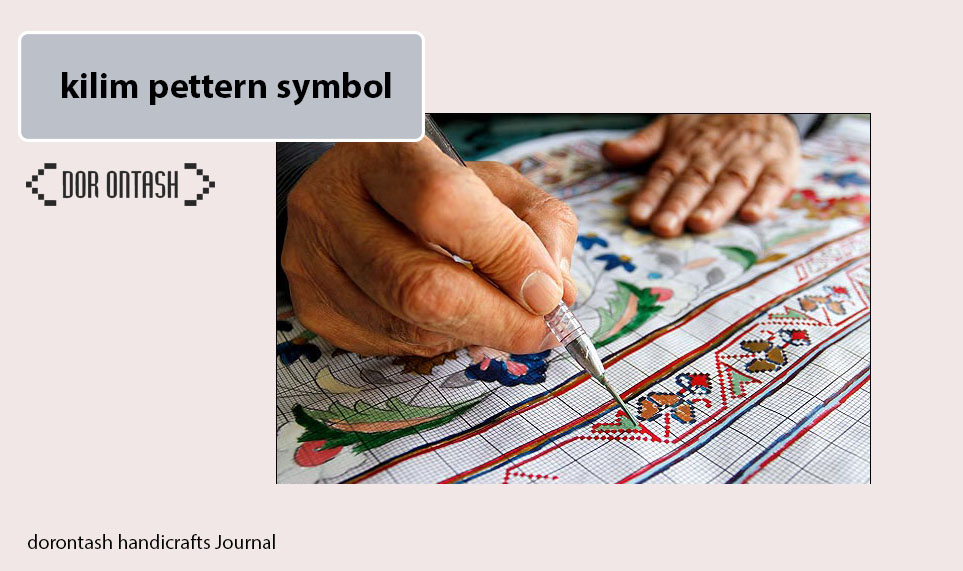I am text block. Click edit button to change this text. Lorem ipsum dolor sit amet, consectetur adipiscing elit. Ut elit tellus, luctus nec ullamcorper mattis, pulvinar dapibus leo.
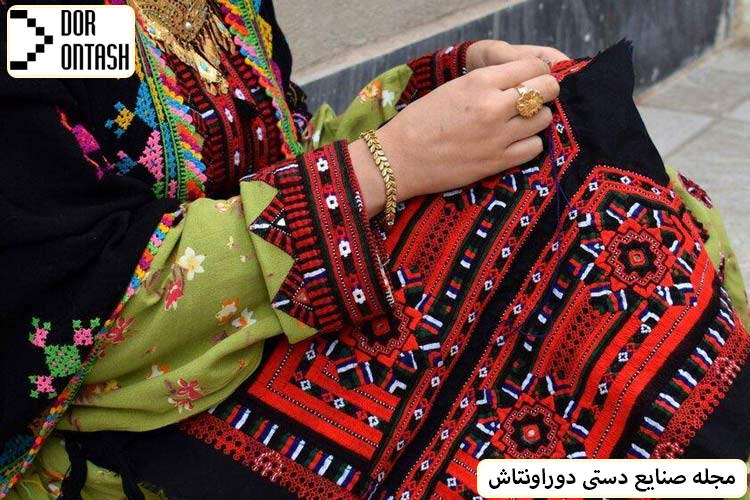
kinds of persian handicrafts. During different years, various crafts festivals have been held in different cities of our country. Also, in addition to buying individual products, some people visit these exhibitions to find a source of wholesale handicrafts . The purpose of holding crafts festivals and exhibitions is to expand trade and introduce various types of handicrafts and their cultural value for them. In these stores, the most famous works and handicrafts of each city are exposed to the public and tourists and those interested in the works They buy art from these stores.
Iranian handicrafts are very diverse in different parts of the country. Each of the cities and villages of Iran produce different handicrafts according to the climate and facilities of each region. Over the years, the diversity of Iran’s handicrafts has increased and has moved away from its first category, but many works produced by Iranian artists fall into the following categories. In this article, we discuss the types of handicrafts in Iran.
Traditional embroidery :

The art of embroidery was formed due to human interest in decorating clothes and various items such as tablecloths and bedspreads. The art of embroidery is one of the common handicrafts in different parts of Iran and it is done in different cities with different tools. Among the most famous branches of embroidery, we can mention needlework, tapestry embroidery, piet embroidery and crochet embroidery.kinds of Iranian handicrafts
Embroidered crafts also include embroidered pieces inside the fabric. Needlework is done on simple fabrics, tapestry is done on traditional fabrics such as cashmere, and to decorate the shrine, anklets are done on thick fabrics and crocheting is often done on mahout fabrics. In the past, it was common to use gold and silver in tapestry embroidery and silk thread in embroidery. Among other sub-sets of hand embroidery, we can mention cream embroidery, spring embroidery, star embroidery, clapton embroidery, black embroidery and velvet embroidery. This art has many sub-branches, each of which is related to different cities.
Metal crafts :
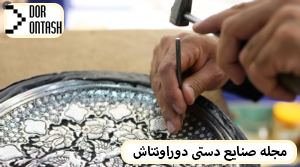 The discovery of metal in ancient times drew the attention of mankind to this basic material for making life necessities, and its use in the preparation of various utensils and everyday tools became common due to the high strength of this material. Among the works left from ancient Iran, there are many examples of metal tools. For this reason, metal handicrafts can be found in ancient Iran.
The discovery of metal in ancient times drew the attention of mankind to this basic material for making life necessities, and its use in the preparation of various utensils and everyday tools became common due to the high strength of this material. Among the works left from ancient Iran, there are many examples of metal tools. For this reason, metal handicrafts can be found in ancient Iran.
Today, metal handicrafts, especially the expensive types such as silverware and copper stamping, are among the most popular handicrafts in Iran. Craftsmen create unique works by using special tools and the hours they spend to carve and shape all kinds of metals. Among the most famous branches of metal handicrafts, we can mention the arts of carpentry, pensmithing, pensmithing, goldsmithing, gilding, silversmithing, copper inlaying, casting, ornamentation, weapon making, and marking.
Enamel handicrafts
 Enamel handicrafts are one of the most beautiful decorative dishes that are very difficult to make. Enamel works of art are one of the most expensive handicrafts in Iran, which are made by the most skilled artisans. This art is more than 5000 years old.kinds of Iranian handicrafts. Enamel artists create beautiful works by combining matte colors and working with tiles and metal. The subcategories of enameling industry include embroidery enamel, grid, painting enamel and blue enamel, and the most difficult field of this art is embossed enameling.
Enamel handicrafts are one of the most beautiful decorative dishes that are very difficult to make. Enamel works of art are one of the most expensive handicrafts in Iran, which are made by the most skilled artisans. This art is more than 5000 years old.kinds of Iranian handicrafts. Enamel artists create beautiful works by combining matte colors and working with tiles and metal. The subcategories of enameling industry include embroidery enamel, grid, painting enamel and blue enamel, and the most difficult field of this art is embossed enameling.
Pottery crafts
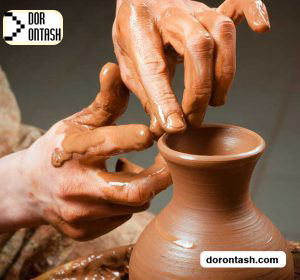 Pottery is one of the most popular crafts in Iran among tourists and has a long history. In every region of Iran, due to the availability of soil, pottery has been common since ancient times. In different historical periods, humans mix clay with water and soil to make pottery, and over time, clay replaces ordinary soil. The most prominent historical pottery is jars and bowls found in ancient buildings.
Pottery is one of the most popular crafts in Iran among tourists and has a long history. In every region of Iran, due to the availability of soil, pottery has been common since ancient times. In different historical periods, humans mix clay with water and soil to make pottery, and over time, clay replaces ordinary soil. The most prominent historical pottery is jars and bowls found in ancient buildings.
Pottery is divided into two categories: unglazed and glazed. In different cities of Iran, there are museums called Pottery Museum where you can see all kinds of historical pottery. Hand pottery, wheel pottery and pottery are sub-sets of pottery art.
Glass crafts
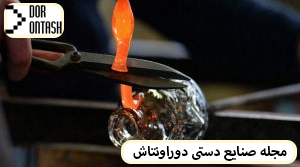 Glass crafts are one of the most beautiful works of art in Iran. Historical glass containers discovered in different parts of Iran show the high age of these handicrafts. You can see the most beautiful glass works made by Iranian artisans in Abgineh Museum, 30 Tir St., Tehran. Subcategories of glass art include molding glass, glass spraying, triple glazing, double glazing, glass cutting, glazing and frosting. Beautiful handicrafts are also made by Iranian artisans by combining this art with pottery and metal crafts.
Glass crafts are one of the most beautiful works of art in Iran. Historical glass containers discovered in different parts of Iran show the high age of these handicrafts. You can see the most beautiful glass works made by Iranian artisans in Abgineh Museum, 30 Tir St., Tehran. Subcategories of glass art include molding glass, glass spraying, triple glazing, double glazing, glass cutting, glazing and frosting. Beautiful handicrafts are also made by Iranian artisans by combining this art with pottery and metal crafts.
wooden handicrafts
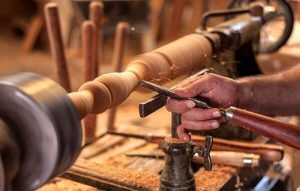 Wooden handicrafts are one of the most beautiful Iranian works of art that have been made in Iran for many years. These industries are very big and many artists work in them. Different cities of Iran have a variety of wooden handicrafts, among which we can mention carpentry, mosaic making, inlay work, inlay work, and lattice work. Handicrafts made by wood craftsmen have many uses in daily life. One of the most popular wood works and handicrafts is carving.
Wooden handicrafts are one of the most beautiful Iranian works of art that have been made in Iran for many years. These industries are very big and many artists work in them. Different cities of Iran have a variety of wooden handicrafts, among which we can mention carpentry, mosaic making, inlay work, inlay work, and lattice work. Handicrafts made by wood craftsmen have many uses in daily life. One of the most popular wood works and handicrafts is carving.
Stone crafts
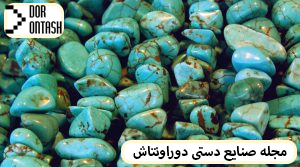 Stone carving and engraving on it is one of the first handicrafts of Iran. Of course, ancient stone objects in different parts of the world show the age of this art all over the world. Stone crafts have changed a lot over time, and with the discovery of beautiful and decorative stones around the world, stone carving and making ornaments became popular. The main sub-branches of these industries are stone carving, turquoise work, stone carving, mesh and stone carving. Stone works are one of the most lasting handicrafts.
Stone carving and engraving on it is one of the first handicrafts of Iran. Of course, ancient stone objects in different parts of the world show the age of this art all over the world. Stone crafts have changed a lot over time, and with the discovery of beautiful and decorative stones around the world, stone carving and making ornaments became popular. The main sub-branches of these industries are stone carving, turquoise work, stone carving, mesh and stone carving. Stone works are one of the most lasting handicrafts.
Painting crafts
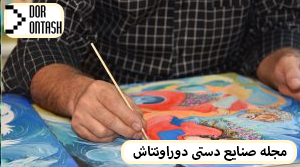
Iranian painting crafts are famous in the world. These works are included in the category of visual arts and are considered one of the most beautiful works and handicrafts of our country. The variety of these industries is also great and different examples of paintings by Iranian artists can be seen in works of gilding, glorification, flowers and birds, and coffee house painting. Painting is the basis and prerequisite for many other handicrafts. You can see outstanding examples of Iranian paintings in the Reza Abbasi Museum in Tehran.
Mat handicrafts
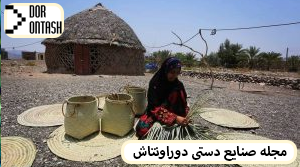 Carpet weaving is another old handicraft of Iran, which is still popular in the southern and northern regions of our country. Today, all kinds of wicker handicrafts are used as souvenirs. Although the mat weaving industry can be considered as one of the sub-branches of wooden handicrafts, the extent of this branch and its high position in the handicraft market has made it a separate branch in this industry.
Carpet weaving is another old handicraft of Iran, which is still popular in the southern and northern regions of our country. Today, all kinds of wicker handicrafts are used as souvenirs. Although the mat weaving industry can be considered as one of the sub-branches of wooden handicrafts, the extent of this branch and its high position in the handicraft market has made it a separate branch in this industry.
To make wicker works in different parts of the country, they use palm leaves, wheat stalks, reeds, and all kinds of branches. Rattan tools are widely used in people’s daily life, especially in areas with high humidity. Tasteful artists produce various works by dyeing the mat and combining it with colored threads. The sub-branches of mat weaving include carpet weaving, pearl weaving, bomb weaving and basket weaving.
Leather crafts
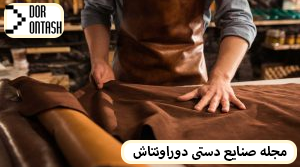 Leather making is one of the most authentic handicrafts of Iranian nomads and herdsmen. The cold weather in livestock and nomadic areas has caused the production of these products. With the passage of time, handmade furs attracted the attention of tourists and its production became popular among the nomads for sale to travelers. The skin is made from the skin of lamb and sheep, and in Turkmen it is called ochmak.
Leather making is one of the most authentic handicrafts of Iranian nomads and herdsmen. The cold weather in livestock and nomadic areas has caused the production of these products. With the passage of time, handmade furs attracted the attention of tourists and its production became popular among the nomads for sale to travelers. The skin is made from the skin of lamb and sheep, and in Turkmen it is called ochmak.
Leather products are one of the most popular handicrafts in Iran. Of course, leather crafts are produced in different parts of the world and it can be said that it is one of the most important export crafts in the whole world. The leather industry is a handicraft related to animal products, and handmade leather is one of the most expensive handicrafts in the market. The variety of leather works of art is great and includes all kinds of clothes, bags, shoes and decorative items. The most important sub-branches of leather handicrafts include traditional leather binding, traditional saddlery, leather sewing, leather embroidery, leather painting, saddle making, and leather engraving.
Traditional handicrafts of dyeing and dyeing
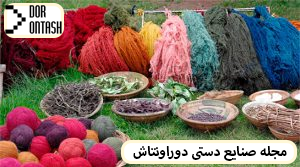 The art of traditional dyeing and dyeing emerged after the development of the weaving industry. The reason for the formation of these handicrafts is the human desire for high color diversity in the production of various types of knitting such as carpets and clothes. In traditional dyeing, plants produced natural colors using natural pigments and their combination. The most important plants that can be used in this branch are rosemary, pomegranate, onion and mountain oil. Different insect larvae were also used in the traditional dyeing method.
The art of traditional dyeing and dyeing emerged after the development of the weaving industry. The reason for the formation of these handicrafts is the human desire for high color diversity in the production of various types of knitting such as carpets and clothes. In traditional dyeing, plants produced natural colors using natural pigments and their combination. The most important plants that can be used in this branch are rosemary, pomegranate, onion and mountain oil. Different insect larvae were also used in the traditional dyeing method.
With the passage of time and with the skill of painters in making various colors, they used this art in architecture, carpentry, weaving and paper industry. Today, traditional dyeing industries are widely used due to their natural nature.
In this article, we introduced Iranian handicrafts and mentioned the works of art of different cities and the most popular handicrafts of our country.
Water crafts
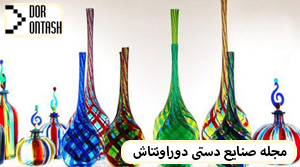 Glass containers are one of the most beautiful works of art in Iran. Historical water bottles discovered in different parts of Iran show the many effects of these handicrafts. You can see the most beautiful water works of Iranian artists at the Aquarium on 30 Tir Street in Tehran. Among the subtypes of water art, we can refer to shaped glass, rimmed glass, three-layer glass, double-layer glass, cut glass, frost and ice. Beautiful handicrafts are also created by combining this art with the art of glazing and metal crafts of Iranian artisans.
Glass containers are one of the most beautiful works of art in Iran. Historical water bottles discovered in different parts of Iran show the many effects of these handicrafts. You can see the most beautiful water works of Iranian artists at the Aquarium on 30 Tir Street in Tehran. Among the subtypes of water art, we can refer to shaped glass, rimmed glass, three-layer glass, double-layer glass, cut glass, frost and ice. Beautiful handicrafts are also created by combining this art with the art of glazing and metal crafts of Iranian artisans.
Painting crafts
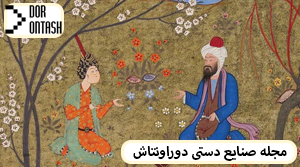 Iranian painting art is world famous. These works are in the category of fine arts and are among the most beautiful works and handicrafts of our country. The diversity of these industries is also great and different examples of paintings by Iranian artists can be seen in gilding, advertisements, flower and bird paintings, and cafe paintings. Design is the basis and prerequisite of many other handicrafts. Excellent examples of Iranian painting can be seen in Reza Abbasi Museum in Tehran.
Iranian painting art is world famous. These works are in the category of fine arts and are among the most beautiful works and handicrafts of our country. The diversity of these industries is also great and different examples of paintings by Iranian artists can be seen in gilding, advertisements, flower and bird paintings, and cafe paintings. Design is the basis and prerequisite of many other handicrafts. Excellent examples of Iranian painting can be seen in Reza Abbasi Museum in Tehran.
Traditional printing crafts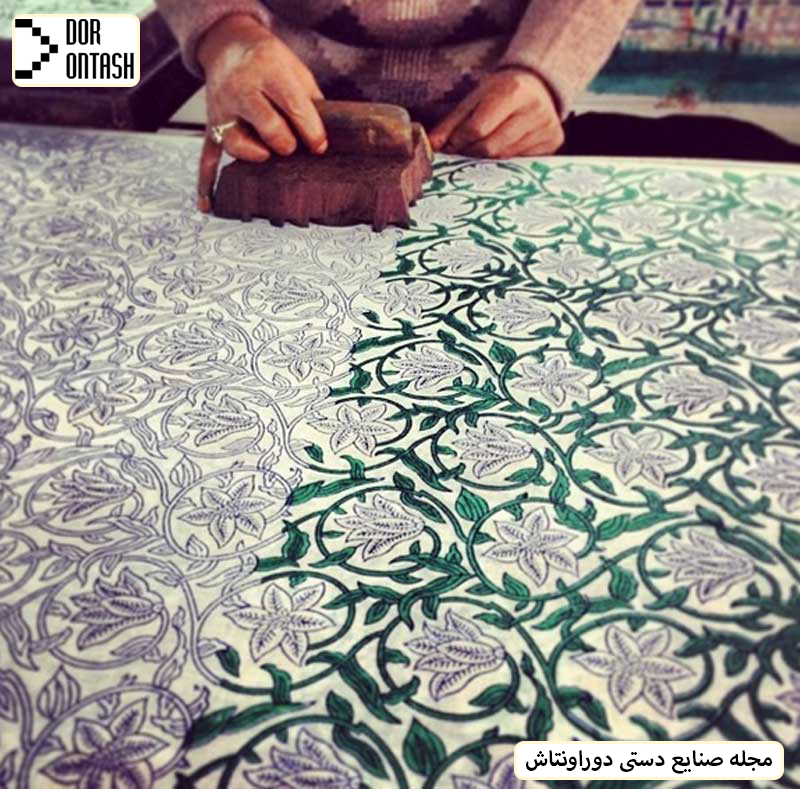
In the past, two types of printing were used in the traditional process. Printing on paper and printing on fabric were different branches of traditional printing, which were initially created to decorate fabric and paper, but over time, they also found their place in the architecture of facades of mosques and historical buildings. Decorative tiles in historical mosques of Iran, such as Sheikh Lotfollah Mosque, are among the best examples of traditional typography. Types of calligraphy and hat embroidery are also sub-branches of traditional Iranian printing.
Traditional clothing handicrafts

Since ancient times, Iranian women have made a significant contribution to the production of handicrafts throughout Iran. Rural, Bedouin and local women in different parts of Iran have made their traditional clothes with signs of ethnic culture. Over time, this dress has opened its place in the market and among tourists. Although this industry can be considered a subset of industries such as textile and leather, the importance of traditional clothing production adds to the importance of these products. Traditional clothes include a wide range of ethnic clothes, shirts and traditional shoes such as shruk, shamosh, kalash, kuch and other types of fabrics.

